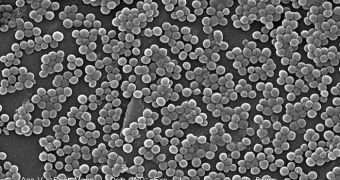Over the past few years, a large number of factors have led to a steady rise in the number of bacteria species that are resistant to antibiotics. The microorganisms can learn to render the chemicals useless, and now experts finally managed to watch this process as it happened.
Investigators at the Princeton University, led by biophysics expert Robert Austin, developed a complex microfluidic device, which they say simulates in detail the harsh environment that forces the bacteria to adapt and evolve.
In this particular case, the investigators were interested in simulating the human body, since any findings stemming from this research could lead to monumental breakthroughs in the field of medicine.
The tiny chip was filled with the chemical components characterizing the environments inside our bodies, and then cultures of methicillin-resistant Staphylococcus aureus (MRSA) were exposed to the harsh substances, Technology Review reports.
At this point, MRSA is accountable for many deaths, particularly in hospitals. It easily infects patients who have a compromised immune system, such as those fresh out of surgery, transplant receivers, comatose individuals, seniors, children and so on.
What the Princeton team demonstrated was that MRSA is capable of developing resistance to any new drug in less than 10 hours. This means that any new compound that does not destroy the entire culture right away becomes harmless to future generations of the organism.
“I call [the new microfluidic device] the 'death galaxy' – a galaxy of different environments designed to be very stressful. And the question is, if we apply very high levels of antibiotics to this funny world, would we see the rapid evolution of resistance?” Austin explains.
Ten hours into the experiment, MRSA cultures were spread throughout the device, even in the channels that carried the highest original concentration of the antibiotic chemical ciprofloxacin. The team determined that a sequence of four reoccurring genetic mutations are responsible for the adaptations.
“It's surprising that it happens so quickly and in such a logical and repeatable manner,” the team says. Whenever a new, potentially-deadly substance is introduced into the mix, the bacteria cultures enable this mechanism, which gets them of the hook.

 14 DAY TRIAL //
14 DAY TRIAL //